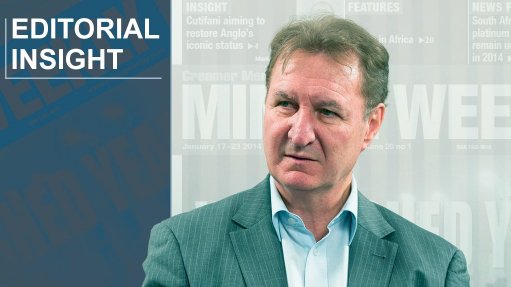
The platinum fuel cell industry has been slumbering for far too long and the biggest reason is cost. The capital cost of procuring and installing fuel cells has been far too high for too long, even though operational expenditure is competitive. Now steps are being taken to improve the economics of platinum fuel cells, against the background of their technical advantages in power generation and automation being well accepted. The latest investment by Anglo American Platinum is one that could help the economics of fuel cells to improve. The JSE-listed platinum mining company is investing $4-million to help reduce the cost of fuel cell electric vehicle ownership, which could well lay the foundation for the mass adoption of hydrogen fuel cells using platinum catalysis. The money is being invested in United Hydrogen Group (UHG) of the US, aimed at lowering the delivered costs of hydrogen and supporting the development of hydrogen refuelling stations. UHG is, in turn, working with Hydrogenious Technologies, a high-tech spin-off of the University of Erlangen-Nuremberg, Germany, which has achieved a breakthrough in liquid organic hydrogen carrier (LOHC) technology. LOHC gives hydrogen diesel-like characteristics that allow it to be transported, distributed and stored in existing infrastructure for oil-based fuels. Hopefully, this will become a breakthrough for fuel cells, which are efficient, versatile and scaleable and represent a proven technology that ensures clean, reliable and cost-effective power – just what the world is looking for right now.
Fuel cells have already been deployed in several of South Africa’s off-grid rural clinics needing power and this country has had a hydrogen fuel cell technology strategy for nearly a decade. Many a telecommunication base on the continent is fuel celled. But much more needs to be done and word on the street is that fresh government stimulus is imminent. The recycled component is coming more to the fore in autocatalysis, which has been platinum’s tailwind since the seventies. Platinum is in need of the next growth phase and it is incumbent on South Africa’s private sector to step up to the plate with the development of fuel cells locally. It is understood that government will soon announce that it is to fund a new project on a 100% basis to produce a bankable feasibility study for the entire fuel cell manufacturing value stream – from catalyst to final assembly. The project is expected to unpack the entire cost structure of the existing fuel cell manufacturing value chain in order to make the technology more commercially viable, primarily for export on a duty-free basis into Africa, India and China.
At last, Trade and Industry Minister Rob Davies has set a 2016 timeline for the establishment of a special economic zone for platinum, which will be the starting point for the long-awaited Platinum Valley. The hope is that what Silicon Valley has been for solid-state development in the US, the Platinum Valley will be for fuel cells. A zero-emissions energy world that needs a lower carbon footprint seems a no-brainer.